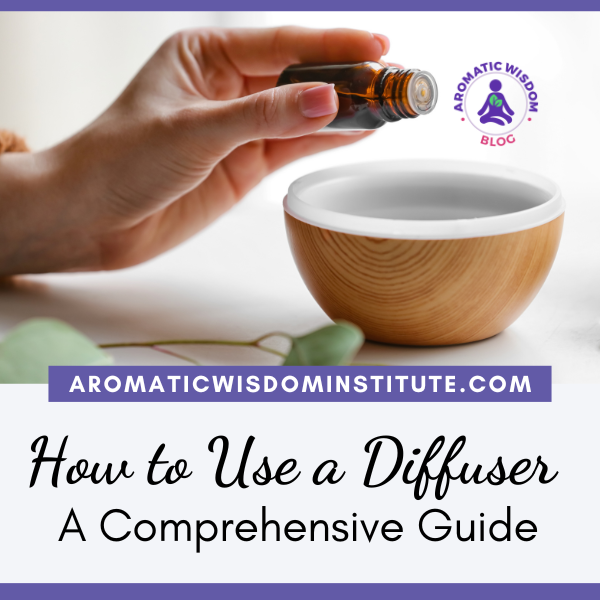Choosing the Right Essential Oil Diffuser
Selecting the perfect essential oil diffuser for your needs involves considering several factors. This section will help you navigate through the key considerations, compare different types of diffusers, and provide recommendations based on specific needs.
Factors to Consider
Room Size
The size of the room where you plan to use the diffuser is crucial in determining the appropriate type and size of the diffuser.
- Small Rooms: For spaces like bathrooms or small bedrooms, a compact ultrasonic or evaporative diffuser will suffice.
- Medium Rooms: For living rooms or larger bedrooms, a medium-sized ultrasonic or nebulizing diffuser is ideal.
- Large Rooms: For open-plan areas or large spaces, consider a powerful nebulizing diffuser or multiple diffusers to ensure adequate coverage.
Noise Level
Noise level is an important factor, especially if you plan to use the diffuser while sleeping or working.
- Quiet Operation: Ultrasonic and heat diffusers generally operate quietly.
- Moderate Noise: Nebulizing diffusers can be noisier due to the air pump mechanism.
- Silent Operation: Evaporative diffusers, particularly those without fans, are usually silent.
Maintenance
Consider the ease of cleaning and maintaining your diffuser.
- Low Maintenance: Evaporative and heat diffusers typically require less frequent cleaning.
- Moderate Maintenance: Ultrasonic diffusers need regular cleaning to prevent mold and mildew.
- High Maintenance: Nebulizing diffusers require frequent cleaning to avoid clogging and ensure optimal performance.
Comparison of Different Types of Diffusers
| Feature |
Ultrasonic Diffusers |
Nebulizing Diffusers |
Evaporative Diffusers |
Heat Diffusers |
| Dispersion Method |
Water and ultrasonic waves |
Pressurized air |
Fan and pad/filter |
Heat |
| Water Required |
Yes |
No |
No |
No |
| Noise Level |
Quiet |
Moderate |
Silent to quiet |
Silent |
| Maintenance |
Moderate |
High |
Low |
Low |
| Aroma Intensity |
Moderate |
High |
Low to moderate |
Low |
| Therapeutic Benefit |
High |
Very high |
Moderate |
Lower due to heat |
| Humidifying Effect |
Yes |
No |
No |
No |
Recommendations Based on Specific Needs
For Relaxation and Sleep
- Recommendation: Ultrasonic diffuser with a large water tank and quiet operation.
- Why: The continuous gentle mist and quiet operation can create a soothing atmosphere ideal for relaxation and sleep.
For Maximum Therapeutic Benefits
- Recommendation: Nebulizing diffuser.
- Why: It disperses pure essential oil without dilution, providing the most potent therapeutic effects.
For Ease of Use and Low Maintenance
- Recommendation: Evaporative diffuser.
- Why: These diffusers are simple to use, require minimal maintenance, and are often portable.
For Large Spaces
- Recommendation: High-capacity ultrasonic diffuser or multiple nebulizing diffusers.
- Why: These options ensure that the aroma reaches all corners of a large room effectively.
For Budget-Friendly Option
- Recommendation: Heat diffuser.
- Why: Heat diffusers are generally more affordable and easy to use, though they may offer fewer therapeutic benefits.
By considering these factors and comparing the different types of diffusers, you can select the one that best fits your needs and preferences. Next, we’ll guide you through the step-by-step process of setting up and using your essential oil diffuser.
Step-by-Step Guide to Using Your Essential Oil Diffuser
Setting Up Your Diffuser
Unboxing and Checking Components
When you first receive your essential oil diffuser, carefully unbox it and ensure that all components are included. Typical components may include:
- The main diffuser unit
- Power adapter
- Measuring cup (if included)
- User manual
- Any additional accessories (e.g., remote control, cleaning brush)
Verify that all parts are intact and undamaged. This initial check will help you avoid any issues when you start using the diffuser.
Reading the Manual
Before using your diffuser, read the user manual thoroughly. The manual provides specific instructions for your model, including setup, operation, and maintenance. Understanding the manufacturer’s guidelines ensures that you use the diffuser correctly and prolong its lifespan.
Adding Water
Recommended Water Type
The type of water you use can affect the performance and longevity of your diffuser.
- Distilled Water: Recommended for most diffusers as it minimizes mineral buildup.
- Tap Water: Acceptable for use, but can lead to mineral deposits over time. Ensure it is clean and free from impurities.
Filling to the Correct Level
- Remove the top cover or lid of the diffuser.
- Use the measuring cup (if provided) to add water to the reservoir.
- Fill the reservoir to the indicated maximum fill line. Overfilling can cause the diffuser to malfunction.
- Replace the top cover securely.
Adding Essential Oils
How Much Oil to Use
The amount of essential oil to add depends on the size of the water reservoir and your personal preference for scent strength.
- General Guideline: Use 3-5 drops of essential oil per 100 ml of water.
- Adjust as Needed: Start with fewer drops and increase gradually if you prefer a stronger aroma.
Best Practices for Blending Oils
- Single Oil: Add the desired number of drops directly to the water.
- Blends: If using multiple oils, pre-mix them in a small container before adding to the water. Common blends include calming (lavender, chamomile) or energizing (peppermint, lemon).
Turning On the Diffuser
Operating Buttons and Settings
- Plug in the power adapter and connect it to the diffuser.
- Turn on the diffuser using the power button. Refer to the manual for specific button operations.
- Mist Settings: Some diffusers have adjustable mist levels. Select the desired mist intensity (e.g., continuous or intermittent mist).
- Timer Settings: Set the timer if your diffuser has this feature (e.g., 1 hour, 3 hours, continuous).
Adjusting Mist Levels and Timer Settings
- Mist Levels: Adjust according to room size and desired fragrance strength.
- Timer Settings: Use the timer to control how long the diffuser runs. This helps conserve essential oils and prevents overuse.
Maintaining Your Diffuser
Regular Cleaning Schedule
Regular maintenance keeps your diffuser running smoothly and prevents the buildup of residue.
- Daily Cleaning: After each use, empty any remaining water and wipe the reservoir with a clean, dry cloth.
- Weekly Cleaning: Every week, perform a more thorough cleaning.
Deep Cleaning Process
- Empty the Reservoir: Ensure the diffuser is unplugged and empty any water.
- Clean with Vinegar: Fill the reservoir halfway with water and add a tablespoon of white vinegar. Run the diffuser for 5-10 minutes to clean the internal components.
- Rinse Thoroughly: Empty the vinegar solution, rinse with clean water, and wipe dry with a cloth.
- Clean the Exterior: Wipe the exterior of the diffuser with a damp cloth.
Troubleshooting Common Issues
- No Mist Output: Check if the diffuser is properly connected to power and has enough water. Ensure the ultrasonic plate is clean.
- Weak Aroma: Add more essential oil or check if the oil is of good quality. Clean the diffuser to remove any blockages.
- Leaking Water: Ensure the diffuser is placed on a flat surface and not overfilled. Check for any cracks or damages.
Following these steps ensures that you get the most out of your essential oil diffuser, enjoying the benefits of aromatherapy in your home. In the next section, we’ll share tips for effective use and discuss the various benefits of using an essential oil diffuser.
Tips for Effective Use
Best Times to Use a Diffuser
Using an essential oil diffuser at the right times can enhance its benefits:
- Morning: Use energizing oils like peppermint or citrus to start your day with a burst of energy and focus.
- Afternoon: Diffuse uplifting scents like rosemary or eucalyptus to combat the afternoon slump and maintain productivity.
- Evening: Opt for calming oils like lavender or chamomile to unwind and prepare for a restful night’s sleep.
- Before Bed: Create a relaxing bedtime routine by diffusing sleep-promoting oils like cedarwood or ylang-ylang about 30 minutes before you go to sleep.
Recommended Essential Oils for Different Purposes
Essential oils can be tailored to meet various needs and enhance different aspects of your daily life:
- Relaxation: Lavender, chamomile, sandalwood
- Focus and Concentration: Rosemary, peppermint, lemon
- Energy and Uplift: Orange, grapefruit, bergamot
- Stress Relief: Frankincense, clary sage, ylang-ylang
- Sleep Aid: Lavender, cedarwood, marjoram
Safety Tips
Ensuring the safe use of essential oils is crucial, especially when diffusing around pets and children:
- Around Pets: Some essential oils can be harmful to pets. Avoid using oils like tea tree, eucalyptus, and citrus around dogs and cats. Always ensure the room is well-ventilated and allow your pet to leave the area if they choose.
- Around Children: Use gentle, child-safe oils like lavender and chamomile. Avoid strong or potentially irritating oils.
- Avoid Overuse: Over-diffusing can cause headaches, nausea, or irritation. Limit diffusion to 30-60 minutes at a time and ensure proper ventilation.
- Allergies and Sensitivities: Test a small amount of oil before diffusing to ensure no allergic reactions. Discontinue use if any irritation occurs.
Benefits of Using an Essential Oil Diffuser
Health Benefits
Using an essential oil diffuser can positively impact your health in various ways:
- Improved Mood: Aromatherapy can help elevate mood and reduce feelings of anxiety and depression. Scents like citrus and peppermint are known to boost happiness and energy levels.
- Better Sleep: Diffusing calming oils like lavender and chamomile before bed can promote relaxation and improve sleep quality.
- Respiratory Benefits: Many essential oils, such as eucalyptus and peppermint, have decongestant properties that can help ease breathing difficulties and support respiratory health.
- Stress Reduction: Essential oils like bergamot and ylang-ylang can help reduce stress and create a calming environment.
Environmental Benefits
Essential oil diffusers offer several environmental advantages over traditional air fresheners:
- Natural Air Freshener: Essential oils are a natural alternative to synthetic air fresheners, which often contain harmful chemicals. They can purify the air and create a pleasant aroma without the use of artificial fragrances.
- Reduced Chemical Exposure: Using natural essential oils reduces exposure to potentially toxic substances found in commercial air fresheners and sprays.
- Sustainable: Many essential oils are derived from renewable plant sources, making them an environmentally friendly option.
Cost-Effectiveness Compared to Other Methods
Investing in an essential oil diffuser can be more cost-effective in the long run:
- Long-Lasting Oils: High-quality essential oils are potent, and a few drops go a long way. A single bottle can last for months, making them an economical choice.
- Multi-Purpose: Essential oils can be used for various purposes, such as cleaning, skincare, and aromatherapy, reducing the need to buy multiple products.
- Reduced Need for Air Fresheners: A diffuser can replace multiple air fresheners, leading to savings over time and reducing waste.
By following these tips and understanding the benefits, you can maximize the effectiveness of your essential oil diffuser and enjoy a healthier, more pleasant living environment. In the next section, we’ll discuss common mistakes to avoid when using a diffuser.
Common Mistakes to Avoid
Using an essential oil diffuser correctly can significantly enhance your aromatherapy experience and ensure the longevity of your device. Here are some common mistakes to avoid:
Overfilling the Water Tank
Why It’s a Mistake
Overfilling the water tank can cause the diffuser to malfunction or stop working altogether. It can also lead to water leakage, which can damage the diffuser and surrounding surfaces.
How to Avoid It
- Check the Fill Line: Always fill the water tank only up to the indicated maximum fill line.
- Use the Measuring Cup: If your diffuser comes with a measuring cup, use it to ensure you add the correct amount of water.
Using Too Much or Too Little Essential Oil
Why It’s a Mistake
Using too much essential oil can create an overpowering aroma that might cause headaches, nausea, or respiratory irritation. Conversely, using too little oil may not produce the desired scent or therapeutic effect.
How to Avoid It
- Follow Guidelines: Use 3-5 drops of essential oil per 100 ml of water as a general rule. Adjust based on your preference and the size of the room.
- Start Small: If you’re new to using essential oils, start with a smaller amount and gradually increase until you find the right balance.
Not Cleaning the Diffuser Regularly
Why It’s a Mistake
Failing to clean your diffuser regularly can lead to the buildup of oil residue, mold, and mildew. This can affect the diffuser’s performance, produce unpleasant odors, and pose health risks.
How to Avoid It
- Daily Maintenance: Empty and wipe the water reservoir with a clean, dry cloth after each use.
- Weekly Cleaning: Perform a more thorough cleaning once a week using a solution of water and white vinegar. Run the diffuser for 5-10 minutes with this solution, then rinse thoroughly and wipe dry.
- Deep Cleaning: Periodically, do a deep clean by soaking the water reservoir in a vinegar solution, scrubbing gently with a soft brush if necessary, and rinsing well.
Avoiding these common mistakes will help you get the most out of your essential oil diffuser, ensuring it runs efficiently and effectively. In the next section, we’ll cover frequently asked questions (FAQs) to further assist you in using your diffuser.
FAQs About Essential Oil Diffusers
Can I Use Any Type of Essential Oil in My Diffuser?
Answer:
Not all essential oils are created equal, and using poor-quality oils can affect the performance of your diffuser and potentially harm your health. Always use high-quality, 100% pure essential oils. Avoid oils with added synthetic ingredients or fillers. Some oils may also be harmful to pets, so check for pet-safe options if you have animals at home.
How Long Should I Run My Diffuser?
Answer:
The optimal duration for running your diffuser depends on the type of diffuser and your personal preference. Generally, it’s recommended to diffuse for 30-60 minutes at a time. Many diffusers come with timer settings that allow you to control the duration. Avoid continuous use for extended periods, as it can lead to overexposure to essential oils.
Is It Safe to Leave My Diffuser On Overnight?
Answer:
While some diffusers are designed to run continuously, it’s usually not recommended to leave them on overnight. Overexposure to essential oils can cause headaches, nausea, or respiratory issues. Use the timer setting to run the diffuser for a set period before you sleep, and ensure your bedroom is well-ventilated.
What Should I Do If My Diffuser Stops Working?
Answer:
If your diffuser stops working, follow these steps:
- Check the Power Supply: Ensure the power adapter is securely connected and the outlet is functioning.
- Inspect the Water Level: Make sure the water reservoir is filled to the appropriate level.
- Clean the Diffuser: Regular cleaning can resolve many issues. Follow the cleaning instructions in your manual.
- Consult the Manual: Refer to the troubleshooting section in your user manual for model-specific guidance.
- Contact Customer Support: If the diffuser still doesn’t work, reach out to the manufacturer’s customer support for assistance.
Conclusion
Recap of Key Points
Using an essential oil diffuser can significantly enhance your well-being by dispersing the therapeutic properties of essential oils into the air. We’ve covered:
- The different types of essential oil diffusers and their pros and cons.
- How to choose the right diffuser based on your needs.
- A step-by-step guide to setting up and using your diffuser.
- Tips for effective use, including the best times to diffuse and safety considerations.
- The health, environmental, and cost benefits of using a diffuser.
- Common mistakes to avoid and troubleshooting tips.
Encouragement to Start Using a Diffuser
With this comprehensive guide, you’re now well-equipped to incorporate an essential oil diffuser into your daily routine. Whether you seek relaxation, improved focus, or a natural way to enhance your living environment, an essential oil diffuser can make a positive impact.
Invitation to Share Experiences and Questions in the Comments
I’d love to hear about your experiences with essential oil diffusers. Do you have a favorite essential oil or blend? Have you discovered any tips or tricks that work well for you? Share your thoughts and questions in the comments below!
Additional Resources
Links to Recommended Essential Oils and Diffusers
- Top 10 Essential Oils for Beginners
- Best Ultrasonic Diffusers of 2024
- Nebulizing Diffusers: What You Need to Know
Further Reading on Essential Oil Benefits and Uses
- The Benefits of Aromatherapy: A Comprehensive Guide
- How to Create Your Own Essential Oil Blends
- Essential Oils for Health and Wellness
Contact Information for Professional Advice
For personalized advice on choosing and using essential oils and diffusers, contact a certified aromatherapist or your healthcare provider. You can also reach out to me at liz@aromaticwisdom.com for more information.
Thank you for reading this guide and I hope it helps you enjoy the many benefits of essential oils and diffusers.
Happy diffusing!




